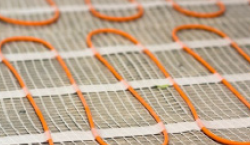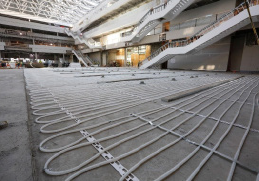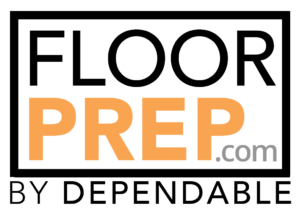Blog
Installation of Radiant Heating Systems
Radiant Heating systems, both hydronic (liquid) and electric increase the comfort of a space, while delivering energy efficiency. Radiant hydronic systems are particularly efficient as they circulate hot water through PEX tubing or piping typically embedded within a thermal mass (concrete/ underlayment/mortar) on the subfloor. The effect is a warm floor close to body temperature that releases heat into the space. Spaces heated by radiant are appreciated for their uniform comfort with no forced air and reduced cost of heating. While this has been a popular method for heating homes in Europe, it is estimated that less than 5% of homes in the U.S. utilize radiant heating. That is changing; Today’s radiant systems are innovative and available in a variety of formats to facilitate cost effective, comfortable space heating and energy efficiency. However, radiant systems offer additional benefits often overlooked, identified here by Kim Bliss of Uponor in a recent article on gb&d;
“Because hydronic radiant heating systems use pumps to move water instead of fans or blowers to push air, the system does not circulate viruses, allergens, or odors throughout the indoor space.
In addition to benefits in air quality, hydronic radiant floor heating systems also do not require ductwork, so they provide greater architectural freedom for building design, including expansive ceilings with open spaces. Hydronic radiant floor heating is quiet. The water running through the tubing in the floors silently distributes warmth throughout a space without any noise.
Water has the capacity to transport energy 3,500 times great- er than air. That means a hydronic radiant heating system that uses water to heat a space rather than air will be much more energy-efficient.
Best of all, hydronic radiant floor heating systems can become even more energy efficient when paired with sustainable heat sources, such as geothermal and solar. These types of systems can potentially provide a structure with free heat, which is the best form of sustainable comfort.”
Kim Bliss, February 5, 2021, gb&d “How Radiant Promotes Sustainability and Indoor Environmental Quality”
Radiant systems are typically embedded in a flowable underlayment prior to installation of the finished floor. While underlayments formulated with portland and/or calcium aluminate underlayments may be suitable for radiant installations over concrete, their need to be well bonded to a sound substrate can lead to costly failures with radiant systems.
Volume stable gypsum based underlayments are ideal for systems over wood, concrete and particularly Uponor’s Fast Trak. Systems such as Uponor’s Fast Trak provide the means for a “lower profile” radiant system – requiring as little as ¼” cover by underlayment (traditional hydronic radiant systems typically require ¾” cover). Always stay within manufacturers recommendations and local building codes to ensure your system is compliant.

Skimflow LP features a hybrid binder utilizing both gypsum and portland cement. In simple terms, the gypsum ensures volume stability and fire resistance, while the portland cement provides a sound, strong and dust free surface for subsequent flooring finishes.

Unlike site mixed gypsum, Skimflow LP comes in a pre-sanded, 50 lb bag requiring only the addition of water. Skimflow LP’s superior flow provides a flat smooth substrate that exceeds 4100 psi in compressive strength, and is ready for a wide variety of flooring finishes.
In the installation featured, Pour Perfect of Minneapolis, MN primed the prepared concrete substrate with Primer A to ensure the existing concrete not covered by the Uponor Fast Trak system would interface well with the Skimflow LP.
Uponor Fast Track panels were placed, and the hydronic tubing was installed. Pour Perfect placed Skimflow LP with a 3/8” (8mm) cover over the Uponor system. When complete, the floor will be finished with Luxury Vinyl Plank – and the homeowner will benefit from comfort, savings, and more!
View the Full Solution
FloorPrep.com offers complete subfloor solutions for new construction, renovation, adaptive reuse, sound attenuation, fire ratings, floating or bonded installations, commercial, residential, wood, gypsum, or concrete substrates. Contact FloorPrep.com Technical Services.




